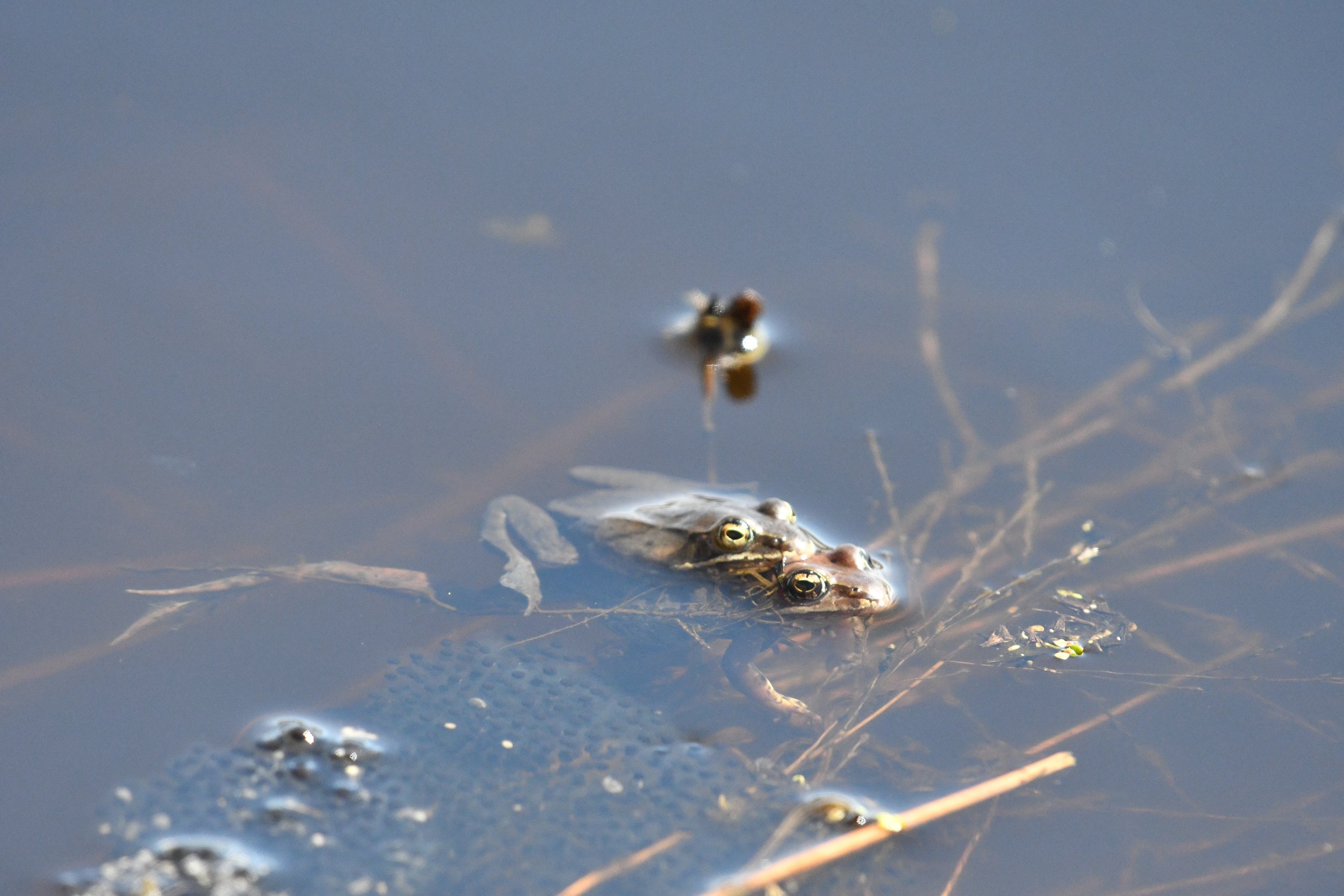Wood Frog (Lithobates sylvaticus)
The wood frog is a member of the Ranidae family. These frogs tend to be the ones that people think of when they picture a ‘frog’. They have webbed hind feet and are excellent jumpers. Unlike most other frogs, they are unique in that they prefer to be on land more than in water.
Wood frog by Lu Carbyn
Why they Matter to Us
The wood frog is an important predator and regulator of insect populations. They feed on flies, mosquitoes, grasshoppers, leeches and other pests. Without them insect populations would grow unchecked. They are also an important food source for other animals such as larger fish, birds, and small mammals. Tadpoles are an abundant food source in the early spring for many other invertebrates.
They are also an important biological indicator species. A sudden decline in amphibian population may suggest a change in the habitability of the ecosystem at large.
How You Can Help
Support protected areas in the Edmonton region (such as EALT!). You can donate or volunteer your time to help with conservation efforts.
Advocate for the protection of wetlands and forests.
Avoid disturbing the frogs or their habitat. Do not pick up or move tadpole eggs. Picking up frogs may transfer chemicals or diseases onto their delicate skin, which may harm them.
How to Identify
Identify by Sight
Wood frog by Lu Carbyn
To identify the wood frog, look for these distinguishing features:
They are medium-sized frogs, about 8 cm in length.
Wood frogs exhibit many different colours (morphs) which can vary from tan, grey, to rusty reddish brown.
The wood frog has a distinct ridge called the dorsolateral fold, which runs along both sides of the frog’s back.
They have a white band on the upper lip and distinct pronounced bands on the thighs and rear legs. The bellies of the frogs are white.
Identify by Sound
The call of the wood frog sounds like a rubbery rapid quacking noise. Like many other frogs, the best time to hear these calls is in the evening between the breeding months of April and May. Listen here!
Where to Find
This species is commonly found near forests of deciduous or boreal trees, often near a source of water such a shallow lake or wetlands.
Wood frogs by Lu Carbyn
Life Cycle
The wood frog is an amphibian, meaning they have a two stage life cycle. During the initial aquatic tadpole stage, they may feed only on plant matter. Once they reach maturity they typically transition into becoming predators.
During mating, males call out for the attention of females. Male frogs will fight each other by grappling and wrestling for the best mating spots.
Fun Facts
Wood frogs are extremely cold tolerant, and can even freeze during winter and still survive.
They are an indicator species: they help warn biologists of sudden changes to an ecosystem.



